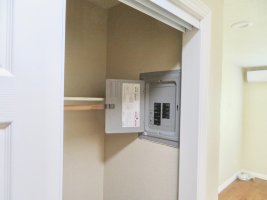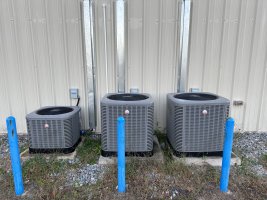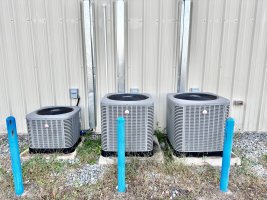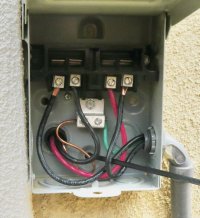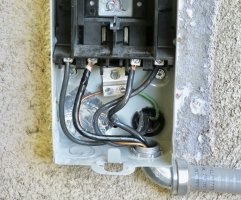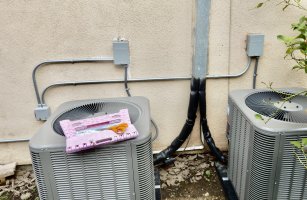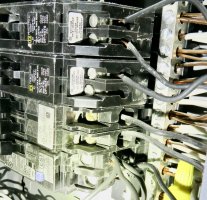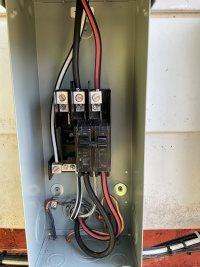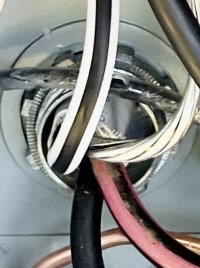110.3(B)
Installation and Use. Listed or labeled equipment shall be installed and used in accordance with any instructions included in the listing or labeling.
I am not familiar with the listing or installation instructions for a cable clamp. I usually assume that two flat, stacked Romex per clamp is allowed. They fit in the space that is provided for the cable. I often find more than two. Do I always write a correction? No I do not. With some crews, the less work that they do, the better the outcome. Sometimes the clamp has plenty of space and a correction would seem picayunish.
This example crossed a line with seven cables in one clamp. The refrain given is usually, "The clamp is large enough." And it is....large enough for a large cable. Just one....large round cable....can't stack round cable.

The real danger with this practice is not so much that cables may be loose. In the grand scheme of mistakes a loose cable at the top of a recessed service enclosure is not such a big deal. But look at the clamp screw against the cable. Now that's a correction.

Installation and Use. Listed or labeled equipment shall be installed and used in accordance with any instructions included in the listing or labeling.
I am not familiar with the listing or installation instructions for a cable clamp. I usually assume that two flat, stacked Romex per clamp is allowed. They fit in the space that is provided for the cable. I often find more than two. Do I always write a correction? No I do not. With some crews, the less work that they do, the better the outcome. Sometimes the clamp has plenty of space and a correction would seem picayunish.
This example crossed a line with seven cables in one clamp. The refrain given is usually, "The clamp is large enough." And it is....large enough for a large cable. Just one....large round cable....can't stack round cable.

The real danger with this practice is not so much that cables may be loose. In the grand scheme of mistakes a loose cable at the top of a recessed service enclosure is not such a big deal. But look at the clamp screw against the cable. Now that's a correction.

Last edited:

